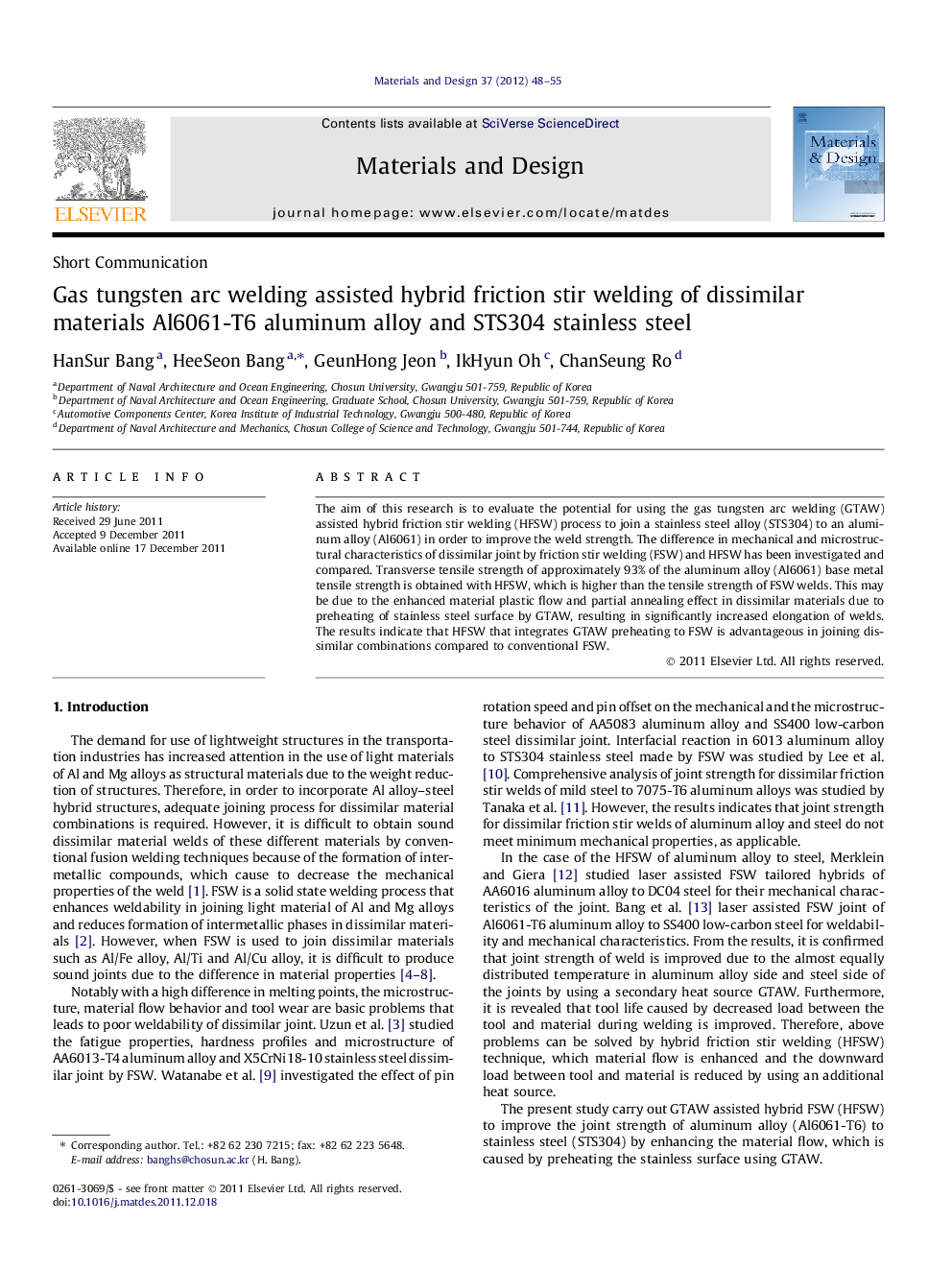| Article ID | Journal | Published Year | Pages | File Type |
|---|---|---|---|---|
| 830734 | Materials & Design (1980-2015) | 2012 | 8 Pages |
The aim of this research is to evaluate the potential for using the gas tungsten arc welding (GTAW) assisted hybrid friction stir welding (HFSW) process to join a stainless steel alloy (STS304) to an aluminum alloy (Al6061) in order to improve the weld strength. The difference in mechanical and microstructural characteristics of dissimilar joint by friction stir welding (FSW) and HFSW has been investigated and compared. Transverse tensile strength of approximately 93% of the aluminum alloy (Al6061) base metal tensile strength is obtained with HFSW, which is higher than the tensile strength of FSW welds. This may be due to the enhanced material plastic flow and partial annealing effect in dissimilar materials due to preheating of stainless steel surface by GTAW, resulting in significantly increased elongation of welds. The results indicate that HFSW that integrates GTAW preheating to FSW is advantageous in joining dissimilar combinations compared to conventional FSW.
► GTAW assisted hybrid friction stir welding (HFSW) has been carried out for dissimilar butt joint. ► Mechanical strength of dissimilar butt joint by HFSW and FSW has been investigated and compared. ► Microstructure of dissimilar butt joint by HFSW and FSW has been investigated and compared.
